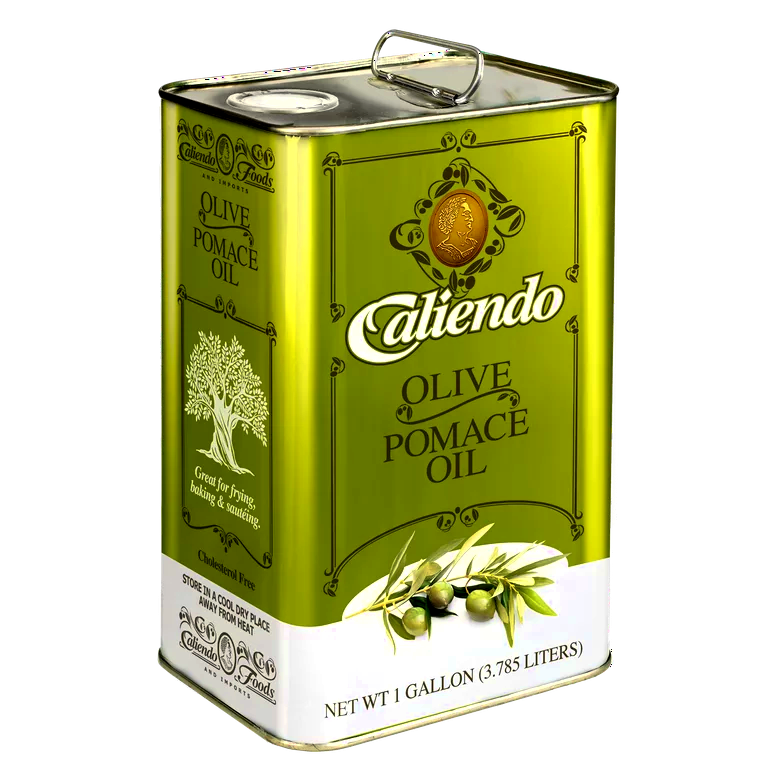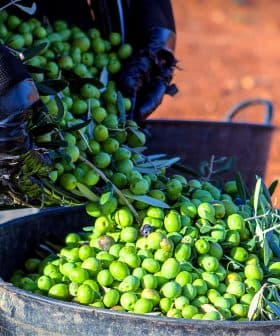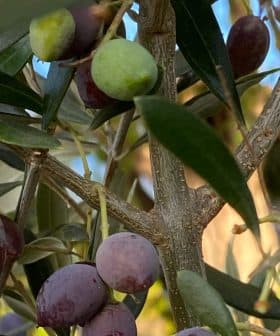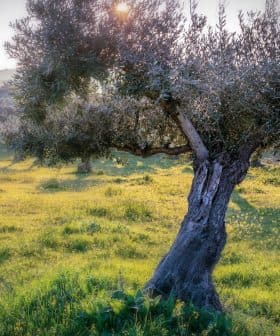 570.4K reads
570.4K readsBasics
What You Didn't Know About Olive Pomace Oil: Uses, Benefits and Controversies

Olive pomace oil is a lower-grade olive oil produced from the byproducts of virgin and extra virgin olive oil production using chemical solvents and heat, making it unfit for human consumption until it is refined. Despite being demonized due to its use in fraudulent practices, olive pomace oil has health benefits compared to other edible oils and can be used in baking and frying applications. Research shows that when produced correctly, olive pomace oil can improve the health profile of baked goods and fried foods, making it a valuable and cost-effective alternative to other oils.
Olive oil terminology is confusing.
Supermarkets are full of olive oil bottles emblazoned with all sorts of meaningful (extra virgin, virgin, early harvest, organic) – and meaningless (light, pure, ultra-premium) prefixes.
However, one category of olive oil increasingly stands out in a market where prices hover near record highs in much of the world: olive pomace oil.
See Also:Olive Oil BasicsOlive pomace oil, occasionally referred to incorrectly as pomace olive oil, sits at the bottom of the hierarchy of olive oil grades. It is produced from the byproducts of the virgin and extra virgin olive oil production process using chemical solvents and heat.
This process yields crude olive pomace oil, which is unfit for human consumption and must be treated into refined olive pomace oil and usually blended with virgin or extra virgin olive oil to become olive pomace oil. (Even the official nomenclatures are confusing.)
The Codex Alimentarius, a collection of internationally recognized food standards, says refined olive pomace oil must be made using methods that do not alter the initial glyceridic structure and have a free acidity, expressed as oleic acid, of less than 0.3 grams per 100 grams.
Meanwhile, olive pomace oil must have free acidity, expressed as oleic acid, less than or equal to one gram per 100 grams, or 1.0%.
The grade is far inferior – in terms of flavor and health benefits – to virgin and extra virgin olive oil. However, a growing body of research demonstrates that it is better than some other edible oils.
The grade is demonized due to its use by some unscrupulous actors who exploit cheaply made olive pomace oil to adulterate extra virgin olive oil and sell it at a steep profit.
While its use in fraud is a problem, the olive pomace oil grade fills a valuable niche in the olive oil world due to its health benefits (compared to other edible oils) and culinary applications.
How olive pomace oil is produced
Olive pomace oil is obtained from the wet fatty pomace paste, the main byproduct of the olive oil production process.

Olive oil pomace being collected as a production waste in a modern oil mill
During the milling process to make virgin or extra virgin olive oil, the olives are crushed into a thick paste, which is kneaded in a malaxer to aggregate the drops of oil before being centrifuged to separate the oil from the rest of the olive material, known as olive pomace paste.
The olive pomace paste, which includes water, skin, olive pits and some olive oil, makes up 80 to 90 percent of the mass of the milled olives.
See Also:How Olives Are Processed Into OilMany producers collect the olive pomace paste after production to separate the remaining oil, representing five to eight percent of the total olive oil yield.
If the olive pomace paste is not sent to be extracted and refined, producers must pay to have it removed and disposed of since it can be toxic to soil and water in industrial quantities. In small quantities, it can be spread in the olive groves and degrade naturally.
The paste is taken to an extraction plant, where it is dried and separated into dry fatty pomace, biomass and steam.
The fatty pomace, which is dried into powder and pressed in pellets, is showered in a chemical solvent, usually hexane, which dissolves the fats but not the rest of the solid pomace. The mixture of fats and solvent is then heated from 60 ºC to 90 ºC until the solvent evaporates.

This is the same method used to produce most other edible oils, including canola, sunflower and soybean.
The result is crude olive pomace oil, which is unsafe for human consumption and must be processed into refined olive pomace oil.
The refining process includes several steps, starting with settling.
In this step, the recently liberated crude olive pomace oil is left in tanks for a minimum of four weeks to allow any remaining water, sediment, impurities or waxes to settle at the bottom of the tank and be drained out.
After settling, the remaining crude olive pomace oil still retains undesirable substances, including free fatty acids and phosphatides and must be neutralized to remove them.
Neutralization, also called purification, involves centrifuging the settled crude olive pomace oil while adding steam and phosphoric acid to remove phosphatides and other impurities.
After neutralization, the crude olive pomace oil is cold-filtered using water and caustic soda to eliminate alcohol that clouds the oil at low temperatures. This phase, known as winterization, produces clear and shiny oil.
Next, the crude olive pomace oil is dehydrated to remove the water added in the previous two steps, and then the oil is carbon-filtered to remove its pigments. The process can also remove harmful compounds that may have formed in the oil during neutralization, such as polycyclic aromatic hydrocarbons and benzopyrenes.
After it is discolored, the crude olive pomace oil is deodorized to remove free fatty acids and substances that give the oil an odor or flavor by injecting steam in a high-pressure vacuum. After, the oil is filtered once again.
Refined olive pomace oil, now fit for human consumption, is taken to a bottling plant and usually blended with virgin or extra virgin olive oil to add flavor and aroma.
The potential danger of the olive pomace oil production process
Heat plays a fundamental role in producing olive pomace oil. However, the temperature must be kept below 90 ºC to prevent the production of dangerous chemicals that can harm human health.
If the temperature is not regulated, the refining process can create polycyclic aromatic hydrocarbons (PAHs), including benzopyrene, which research has shown to be highly carcinogenic and mutagenic.
The risk of benzopyrene contamination occurs when the heating method used to evaporate the solvent exceeds 300 ºC.
In these instances, the fat is liquefied and drips out of the olive pomace. However, the extremely high heat results in the partial combustion of the oil, causing the rapid accumulation of benzopyrenes in the final product.
Benzopyrenes, which are highly reactive, can dissolve easily into cellular membranes and enter a cell’s interior.
This resulting action has been shown to cause either intracellular oxidation – the aging and death of cells – or intoxication, which results in the mutagenesis of the genetic material in the cell’s nucleus.
In some instances, this spreads as an uncontrolled multiplication of damaged cells, which can result in a cancerous tumor.
As a result, specific standards have been set in various regions of the world limiting the allowable amount of benzopyrenes in olive pomace oil.
Within the European Union and member states of the International Olive Council, the limit is two parts per billion or two micrograms per kilogram, as decided in Resolution RES‑1/93-IV/05 Madrid in November of 2005.
Health benefits of olive pomace oil
If olive pomace oil is produced correctly, its consumption provides health benefits compared to other common edible oils.
While the refining process removes the vast majority of the phenolic compounds – which are responsible for most of the health benefits associated with extra virgin olive oil – a growing body of research demonstrates that there are still benefits to olive pomace oil consumption.
Like virgin and extra virgin olive oil, 75 percent of olive pomace oil is comprised of monounsaturated fatty acids.
See Also:Common Olive Pomace Compound Demonstrates Anticancer PotentialAll types of fats help the body absorb vitamins and minerals, build cell membranes and are essential for the mechanisms that cause blood clotting, muscle movement and inflammation.
However, studies have demonstrated that monounsaturated fats lower LDL cholesterol, also known as “bad cholesterol,” leading to a lower risk of heart disease and stroke.
Up to 85 percent of monounsaturated fatty acids in olive pomace oil are oleic acid, an omega‑9 fatty acid.
An extensive body of research has found oleic acid consumption to be associated with the prevention of different types of disorders, such as cardiovascular or autoimmune diseases, metabolic disturbances, skin injury and cancer.
A four-year study published in 2022 by the Institute of Food Science and Technology and Nutrition in Spain found that olive pomace oil consumption improved cardiometabolic risk biomarkers in healthy and high-cholesterol patients.
See Also:Reducing the Size of Pomace Oil Particles Increases Its Healthy Properties, Study ShowsSpecifically, the consumption of olive pomace oil reduced parameters related to cholesterol, waist circumference and lipid oxidation.
The researchers also found that olive pomace oil consumption positively affected insulin resistance and sensitivity, suggesting its consumption could lead to a lower risk of type 2 diabetes.
Additionally, olive pomace oil does retain some polyphenols. While its consumption does not provide anywhere near the same benefits associated with extra virgin olive oil, it is a healthy alternative to other edible oils.
Culinary uses of olive pomace oil
The combination of a neutral flavor, high smoke point (240 ºC), associated health benefits and lower price compared to virgin or extra virgin olive oil make olive pomace oil ideal for a range of culinary applications.
Recent research from Spain’s Instituto de la Grasa, or Fat Institute, found olive pomace oil to be a superior ingredient in bakery products.
Researchers replaced the sunflower oil in traditional cupcake and torta recipes with olive pomace oil. They found the substitution did not diminish the taste of the baked goods while increasing their shelf life and improving their health profiles.
See Also:Use Extra Virgin Olive Oil for Healthy and Delicious BakingA separate study from the Institute of Food Science and Technology and Nutrition found margarine made from olive pomace oil to be an adequate substitute for butter in puffy pastry, such as vol-au-vents, croissants, crodots and palmiers.
Pastries made from olive pomace oil-based margarine had 25 to 37 percent less saturated fat content than butter. At the same time, panelists found no differences in sensory attributes between the two types of pastries and a minimal difference in texture.
Along with baking, olive pomace oil is also an excellent choice for deep frying. Olive pomace oil is healthier than other common deep frying oils, with research indicating it passes along some health benefits to fried food and is a more affordable (though less healthy) option than virgin or extra virgin olive oil.
See Also:Cooking With Extra Virgin Olive OilA 2021 study published by researchers from the Instituto de la Grasa found that frying food in olive pomace oil improved its fatty acid profile and enriched it with antioxidant compounds compared to other types of edible oil.
Analysis of the oil after frying also found the level of polar compounds, associated with negative health consequences, was 25 percent below those set by Spanish law.
Further research from the Food and Nutrition Science and Technology Institute found olive pomace oil outperforms sunflower and high oleic sunflower oil for deep frying potatoes.
Due to its high percentage of oleic acid and bioactive compounds, including squalene and beta-sitosterol, researchers said olive pomace oil was more stable for deep frying over extended periods both in domestic and commercial settings, with tasters rating the flavor, texture and appearance as superior to that of sunflower and high oleic sunflower oil.
Final thoughts
Olive pomace oil is a widely misunderstood category of olive oil.
Unlike virgin and extra virgin olive oil, it is obtained using heat and chemical methods. As a result, it lacks the organoleptic qualities and health benefits of the highest olive oil categories.
Still, there is a place for olive pomace oil. It is cheaper than virgin or extra virgin olive oil and healthier than other edible oils and butter.
When produced correctly, olive pomace oil is better for baking and frying than many alternatives.
Know the Basics
Things to know about olive oil, from the Olive Oil Times Education Lab.
Extra virgin olive oil (EVOO) is simply juice extracted from olives without any industrial processing or additives. It must be bitter, fruity and pungent — and free of defects.
There are hundreds of olive varieties used to make oils with unique sensory profiles, just as many varieties of grapes are used in wines. An EVOO can be made with just one variety (monovarietal) or several (blend).
Extra virgin olive oil contains healthy phenolic compounds. Substituting a mere two tablespoons of EVOO per day instead of less healthy fats has been shown to improve health.
Producing high-quality extra virgin olive oil is an exceptionally difficult and costly task. Harvesting olives earlier retains more nutrients and extends shelf life, but the yield is far less than that of fully ripe olives that have lost much of their healthy compounds.









